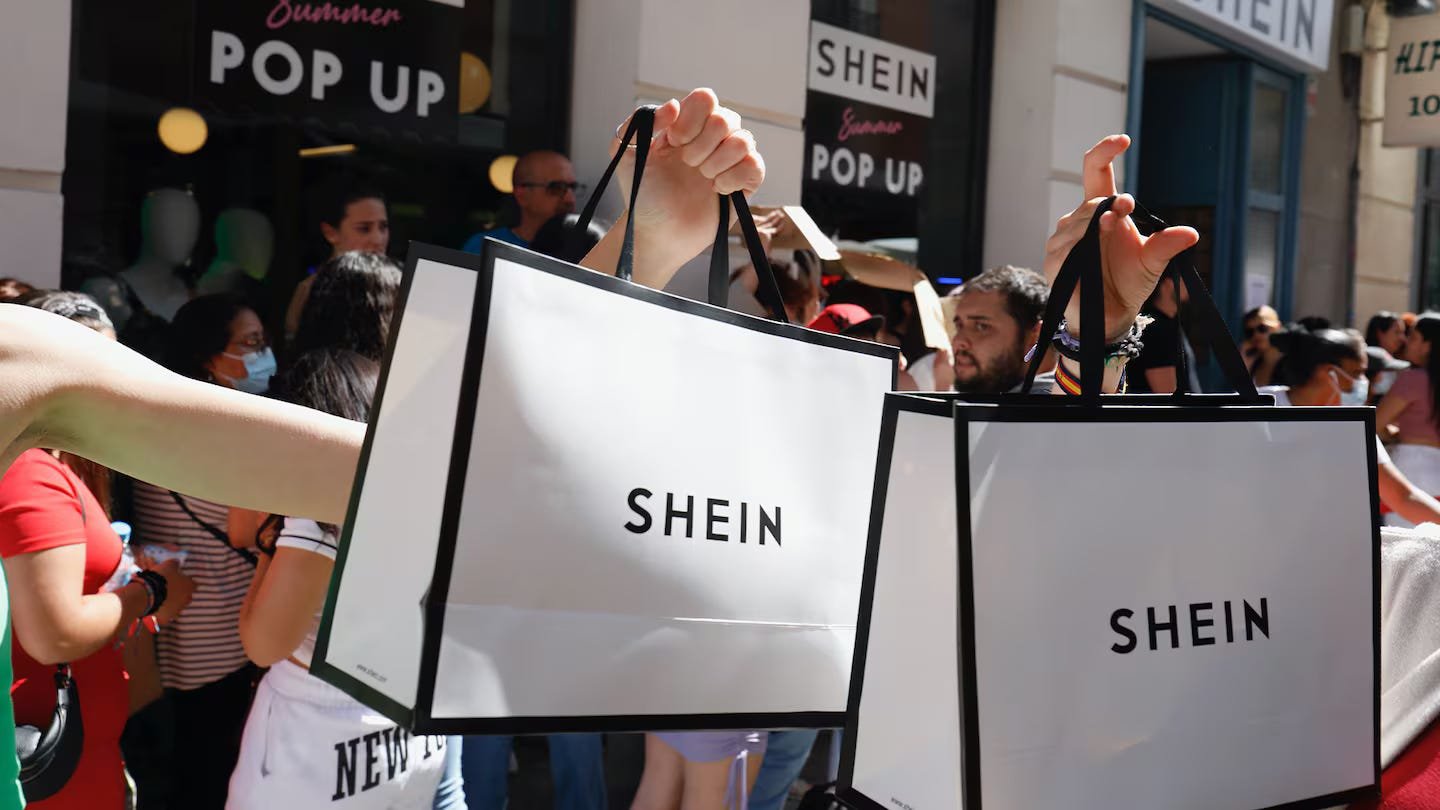How Shein And Temu Influence “Buy More” Culture

Share This Article
Just how do Shein and Temu influence us to buy more? And how can we buy less?
There’s nothing magical about the rise of overconsumption. Fast fashion brands have changed the way we shop for clothes using tried and true tactics. Thanks to this methodically fashion, retailers like Shein and Temu have become behemoths of commerce taking over heritage brands like H&M and Nike by pushing thousands of trendy styles at pocket-friendly prices to consumers daily.
Behind the seams, Shein’s and Temu’s marketing tactics are raising alarms. Reports reveal how the platforms encourage people to spend far more than they should. Knowing how these dark patterns work can help you shop smarter and avoid falling into the trend of overconsumption.
Marketing Tactics That Drive Impulse Buying
Like all brands, Shein and Temu started small. But their growth trajectory has been rapid and happened within recent years. They are now two of the biggest fast fashion retailers worldwide. Their quick rise is impressive and mainly thanks to their online-only model. These retailers reach millions of shoppers across the globe and hit billions in sales every year.
Want to know one secret? Constant new styles and a huge inventory are ready to impress any fashion lover. Shein’s success depends on offering a wide selection of clothes that change all the time. They use sophisticated data tools to spot trending styles before their competitors. This allows them to restock fast and keep customers coming back. The result? People often buy more because they see fresh options every few days.
Shein and Temu both use aggressive marketing to push people to buy impulsively. They target users with personalized ads, collaborate with social media influencers, and run quick sales with big discounts. Scarcity and urgency are common tricks—countdown timers and “only a few left” messages make shoppers feel they must buy now or miss out. These tactics are meant to get you to make quick, unthoughtful decisions.
These retailers also gameify the shopping experience. Their reward programs and limited-quantity offers are designed to excite and trap buyers. When shoppers see a “last few items” message, they rush to buy, fearing they’ll miss out. All these features feed into impulsive shopping habits and addiction-like behavior.
These dark patterns are tricks used on websites and apps to make you do things you didn’t originally plan to do. They might look innocent, but are designed to manipulate you. There’s a reason it’s hard to cancel a subscription, or discounts on additional items are offered at checkout to influence you to buy more items. It’s all by design.
Consequences of Over-Consumption
Reports show that Shein is now considered the most Googled clothing brand and has overtaken other billion-dollar brands like Zara in sales. In 2022, Temu was the most downloaded app in the U.S. While these companies continue to grow their valuations to hundreds of billions of dollars, their fast fashion model is causing major harm to the environment. Shein and Temu’s quick production cycle results in tons of waste, pollution, and overused resources. Ethical issues also exist—labor practices and low wages are common concerns.
- Between 2022 and 2023, Shein nearly doubled its carbon dioxide emissions to 16.7 tons.
- Synthetic textiles like polyester and nylon make up 76% of their total fabrics.
- Factory workers at Shein regularly work 76 hours weekly.
- Factory workers in Temu work 18-hour days, being paid pennies per item.
- An estimated 900,000 Shein packages are sent to customers in the U.S daily.
- Online shopping agents like Temu generate 4.8 times more packaging waste than offline retail stores.
Binge shopping can also take a toll on mental health. Many shoppers report feeling overwhelmed, guilty, or regretful after impulsive purchases. These feelings can grow into a cycle of compulsive buying, leaving consumers feeling out of control and unfulfilled.
Experts warn that bright design cues and limited offers tap into our natural desire for instant gratification. Understanding these tricks can help you recognize them in real time. They advise shoppers to pause and think before buying—asking if you really need an item or just want to fill a fleeting craving.
Tips To Avoid Overconsumption
Be aware of tricks like countdown timers, upselling, and limited stock notices. When you see these, ask yourself if you honestly need the item or are just reacting to pressure. Another actionable tip is to set a budget. Ask yourself how much money you’re comfortable spending on fashion each month. Use apps or notes to track your purchases and stick to your plan. Most importantly, take time before clicking “buy.” Use wish lists and sleep on big purchases. Refresh your memory: do you really need that extra pair of shoes?
Instead of supporting these brands, choose to buy from brands that prioritize fair wages, low waste, and eco-friendliness. Resources like Good On You or Ethical Consumer can help you find responsible fashion options.
Shein and Temu use clever marketing and design tricks to make it easy to overspend and consume. Being aware of these patterns gives you power over your wallet and well-being to make mindful choices for your wallet and our planet. Shopping should be a choice, not a trap.
